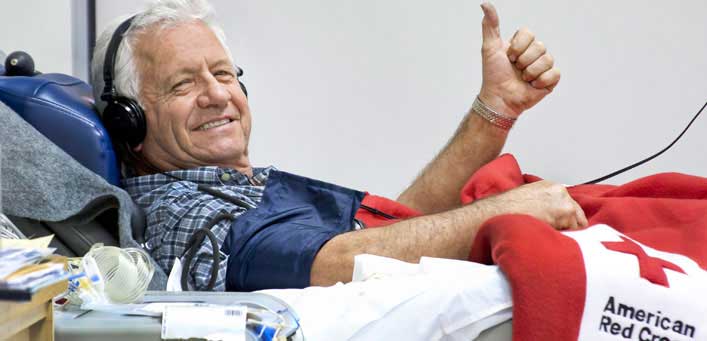RiskVA
Blood – The Elixir of Life 14 Oct 2015
You might say, we’re full of it. The average 150-pound adult has about 5 ½ quarts of the salty, red stuff. The actual amount varies somewhat. A larger person will have somewhat more.
Loss of up to 40% of our circulating blood volume (2.2 quarts) is often fatal. Blood circulates rapidly through the body, making a round trip from the heart and back in approximately one minute.
Most people only see blood outside their body occasionally when they cut themselves or have a nosebleed. Seen in large quantities, especially gushing, spilled on the floor or pavement, causes many people to react with horror and revulsion. Some folks scream, become nauseated, and/or faint at the sight of blood. That response, by the way, is a culturally learned response and entirely counterproductive. Babies don’t freak out at the sight of blood. In fact, they will stick their fingers in it and slide their hand around the intriguing, slippery liquid, and taste it (like Dracula?) as they explore the new experience. It takes parents or other people freaking out to train kids to be repelled by it. What if emergency responders, seeing blood all over you from an injury, screeched “Arggggh blood! This is horrible!” and then passed out?
Blood or blood-like fluids in animals serves a multitude of purposes: carrying chemicals, nutrients, vitamins, hormones, enzymes, and unfortunately, sometimes disease organisms and cancer cells. White blood cells, famous for fighting disease, and red blood cells carrying oxygen are only two kinds of cells found in this life-sustaining mixture.
Red blood cells are vital to our lives. They carry oxygen from our lungs to our body tissue, and carbon dioxide waste back.
Human blood is always red, never blue, in spite of how it looks in our veins through the pale tissue of wrists or the back of your hand. Oxygen-rich blood from the lungs is a vibrant red and travels in the arteries, while oxygen-depleted blood moving back to the heart in our veins is a darker red color. The red color comes from an iron-rich oxygen-carrying chemical called hemoglobin in our red blood cells.
Blood also contains a clotting factor to prevent or slow leaks. When fibrin and platelets in the blood clump together a clot forms. That’s why we don’t continue to bleed from cuts and other minor injuries. But if the circulation slows or stops due to damaged or clogged vessels, a clot can be fatal. A fatty substance called plaque – fatty deposits and cholesterol – can narrow vessels and cause coronary heart disease or heart attacks.
Are you a “blue-blood?” It was said that royal European families were “blue-blooded,” signifying a privileged, elite, superior status. Perhaps their generally pale complexion caused their veins to look bluer. In addition, the royal families virtually all had a blood type of Rh Negative – the universal donor type. Rh Negative blood often has a slightly higher level of copper and that may have enhanced the blue illusion and myth. But it was still red. Less than 5% of the world population have Rh Negative blood, including me. Hmm! I always suspected I had a royal heritage.
There are animals that do have blue blood. Horseshoe crabs do not use cells to transport oxygen. Instead, it is dissolved in a circulating fluid called hemolymph, a liquid that depends on copper chemistry to form hemocyanin, a blue chemical. Clear when it doesn’t have oxygen in it, it turns bright blue when it’s oxygenated. So yes, horseshoe crabs are “blue-bloods.”
Lobsters, crabs, spiders, and some scorpions also have blue hemocyanin as their oxygen-circulating chemical. In low oxygen environments like cold sea water, hemocyanin is more efficient than hemoglobin.
The blue blood of horseshoe crabs is harvested in laboratories to prepare a life-saving chemical that reacts to detect disease organisms in human blood. Scientists remove 30-40% of a horseshoe crab’s blood and then return the crab to the ocean. The resulting bright blue liquid sells for about $15,000 a quart. Some 250,000 horseshoe crabs are collected annually to serve as “donors.”
Anyway, unless you’re a crab, your blood is red. However, being a crabby person won’t give you blue blood, just a lot of enemies. The fields and forests – and oceans – are complex and fascinating. The more I learn, the more I realize how much I don’t know. I guess I can say “I stand all amazed…”
Dr. Risk is a professor emeritus in the College of Forestry and Agriculture at Stephen F. Austin State University in Nacogdoches, Texas. Content © Paul H. Risk, Ph.D. All rights reserved, except where otherwise noted. Click paulrisk2@gmail.com to send questions, comments, or request permission for use.

